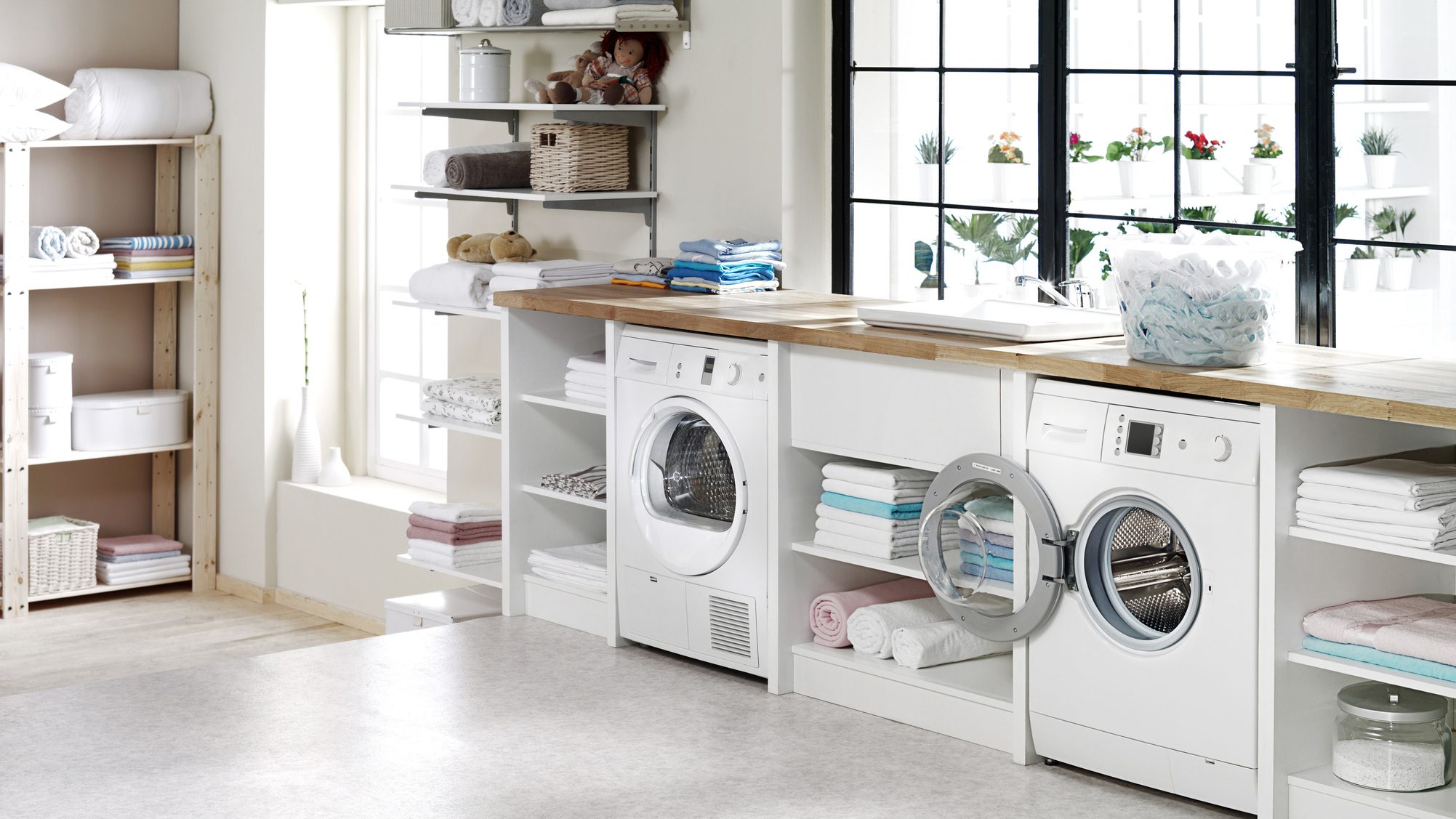
gerenme/iStock
The laundry room is perhaps the least visible room in your home, but it serves a vital purpose—and we spend a lot of time there. According to the U.S. Bureau of Labor Statistics’ American Time Use Survey, women spend about 17 minutes a day (or 119 minutes a week) on laundry, while men spend, on average, 5 minutes a day (or 35 minutes a week).
And even though the actual process of doing laundry can be a drag, the design of your laundry room can make this weekly (or daily!) task a little more convenient, efficient, and safe. But to achieve this trifecta, you’ll need to avoid these laundry room design mistakes.
1. Putting the laundry room in the basement
The basement appears to be a popular location for the laundry room, but that may not be the best spot for your washer and dryer.
“Laundry rooms generally tend to produce quite a bit of humidity and heat, and when you place your laundry room in the basement, moisture has fewer places to disperse,” says Brett Elron, owner and lead interior designer for Barter Design in New York. “This can lead to more cases of mold and rot in your floors and walls.”
That’s not the only problem. The basement is usually the farthest place from the bedrooms, so you’ll be lugging laundry from one end of the house to the other.
If your laundry room has to be situated in the basement, be sure it gets plenty of fresh air with a ventilation fan and an exhaust fan.
2. Forgetting to slope the floor
Here’s hoping you don’t have to deal with any water problems in your new laundry room, but it’s a mistake to assume they won’t appear. Elron says many people fail to design the laundry room with a simple slope toward the drain.
“A level floor will just hold water if there’s a leak or an overflow, but having a slope toward the drain will help remove this water from your floors,” he says. “The general consensus is to have, at a minimum, a quarter-inch slope per square foot of laundry room.”
If you’re wondering if the floor is going to look and feel awkward, Elron says it’s barely noticeable.
3. Not leaving enough space for dryer ventilation
Dryer ventilation is important to prevent a dryer fire, but many times, the appliances are wedged in too close to the wall.
“This can raise the risk of a dryer fire sparking due to excessive buildup and inhibited airflow,” says Jason Kapica, president of Dryer Vent Wizard. He recommends leaving a few inches between the appliance and the counter to allow for cleaning around the machines.
“Additionally, the washer and dryer can then slide in and out easily when a yearly inspection of the machine and the dryer vent is required,” he says.
4. Not making the layout functional
There’s more to your laundry room than just washing and drying clothes, but this doesn’t dawn on many homeowners until it’s too late.
“The laundry room is a utility room, a place for sorting dirty clothes, folding clean clothes, and storing cleaning and laundry supplies,” says Leslie Saul of Leslie Saul & Associates, an architecture and interior design firm in Cambridge, MA. So the design of your laundry room should accommodate these functions, too.
Install shelving or a cupboard above the washer and dryer, and make sure there’s plenty of space for laundry baskets.
“If space is a premium, consider a fold-down, hotel-style press or wall-mounted ironing board placed as close as possible to your dryer so that you can easily move newly dry clothing items directly to the ironing board,” suggests David Ewart, director and interior designer at Pavilion Broadway in Gloucestershire, U.K. “This can keep clutter levels to a minimum and ensure you are able to operate within even the tightest of confines with minimal effort.”
5. Not providing enough light
This is another area that doesn’t get a lot of attention during the planning phase.
“When designing a laundry room, don’t forget to provide enough light so that you can see the stains more clearly,” Saul says.
Also, a frequent complaint about appliances that have digital displays is that the control panel is often hard to read in dim light, which is another reason to make sure the room is well-lit.
“One center light fixture usually isn’t enough; two might be better,” Saul says.
6. Failing to consider a multipurpose room
Depending on how big the room is, it may be a mistake to dedicate it solely to laundry tasks.
“This space could also be used as a gift-wrapping station or a place to use and store crafts supplies,” says Los Angeles–based interior designer Sarah Barnard.
Another idea is to add a bench and cabinets and have the laundry room serve as the mudroom, where the kids can take off their soiled shoes and wet outerwear.
The post When Designing a Laundry Room, Don’t Make These 6 Mistakes appeared first on Real Estate News & Insights | realtor.com®.
No comments:
Post a Comment